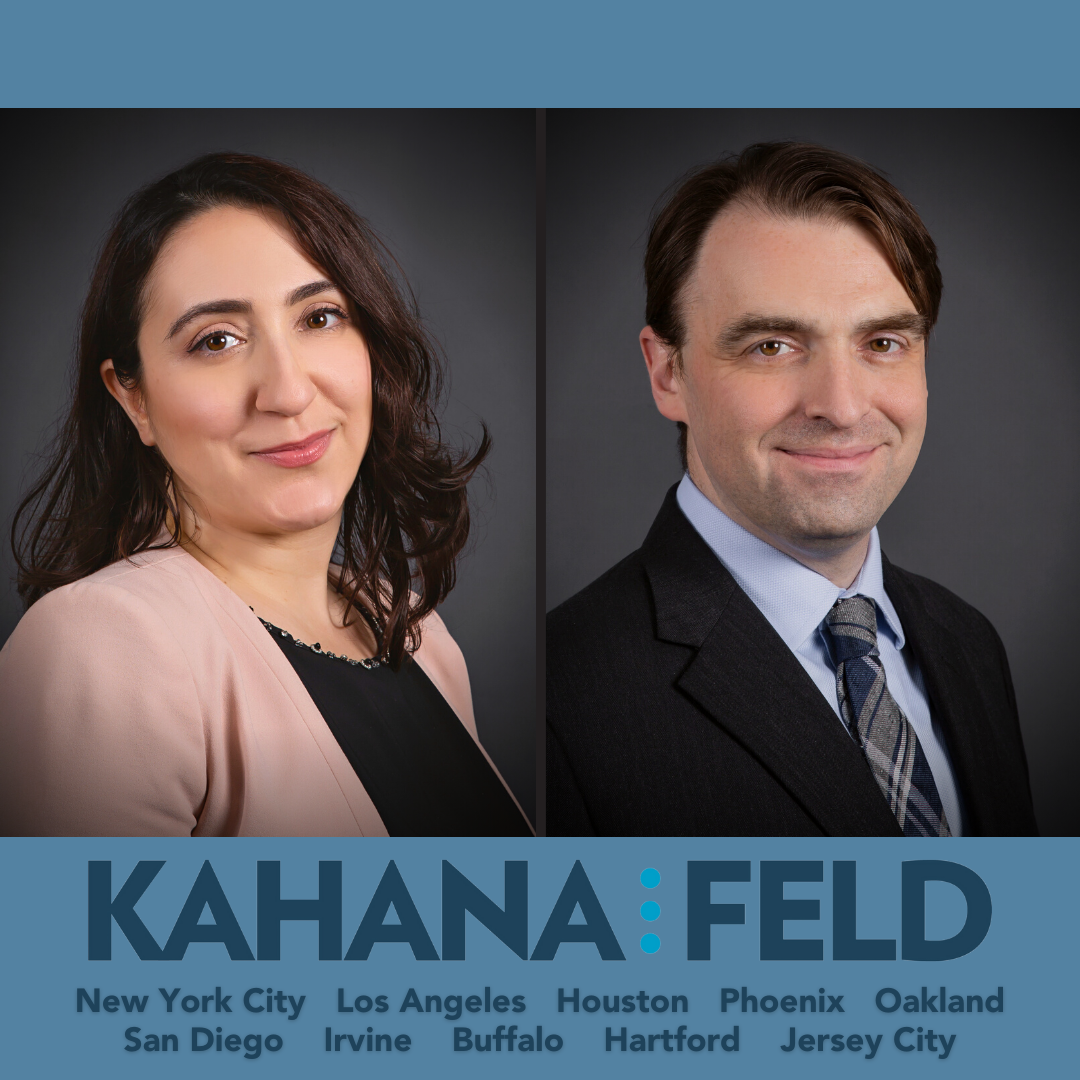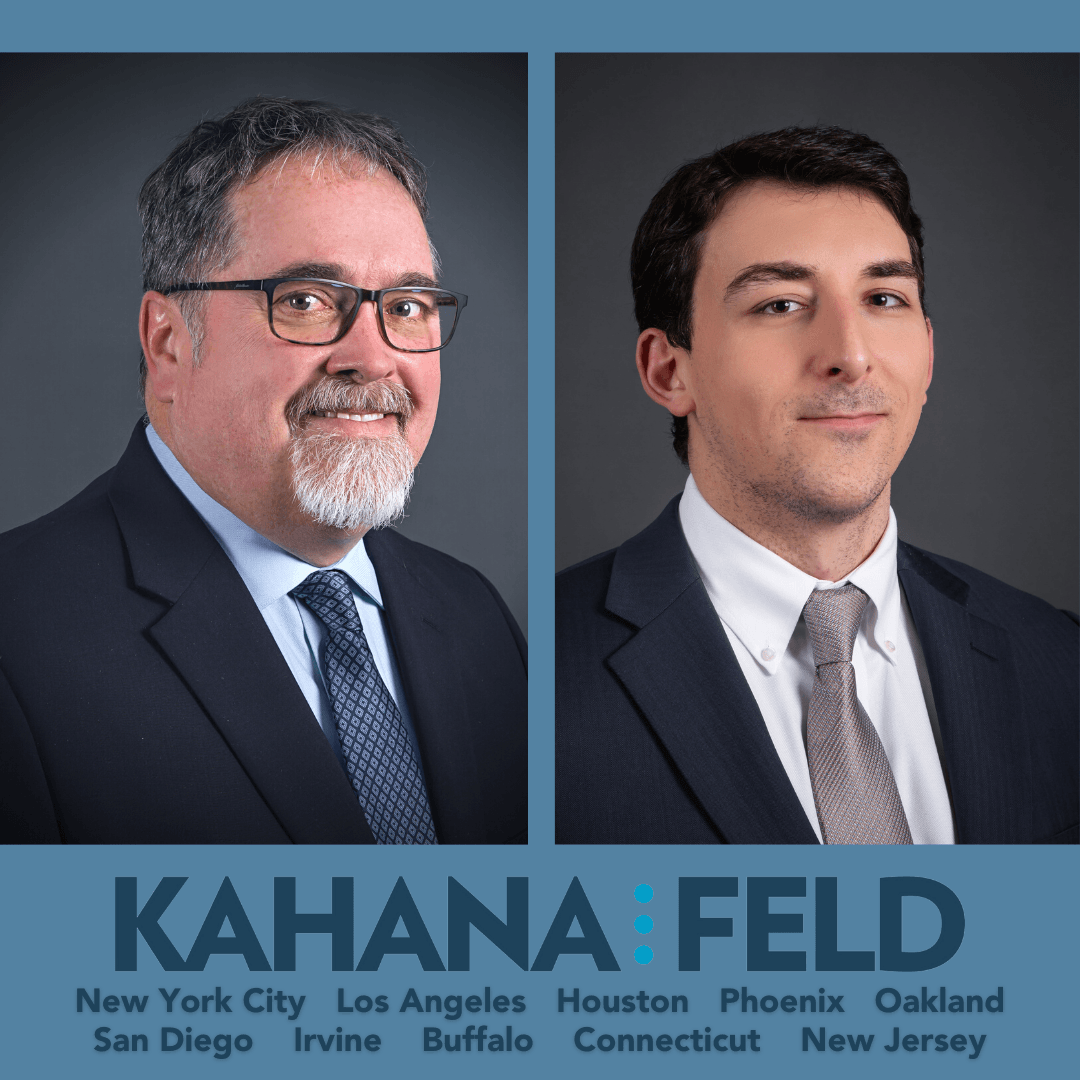Posted In National Appellate Litigation & Consulting Group
Authored and researched by Tim Capowski, John F. Watkins, and Kharis Lund with assistance from a former colleague.
Anyone who follows sports is familiar with the concept of a borderline play—the move or technique that straddles the line between playing hard and cheating. The extra step toward the basket, the intentionally unintentional pick; the inside fastball designed to scare, but not strike, the batter. We expect these plays because we understand that sports are competitive, and that competitors will push the boundaries on what they’re permitted to do in order to win.
Sometimes, however, standards change. What was once an accepted, if borderline, tactic becomes recognized as unhealthy or unsafe. Major League Baseball didn’t formally ban the spitball until after Ray Chapman was killed by a tobacco-covered ball, which was allegedly hard to see in the game’s lighting. The NHL permitted direct hits to players’ heads—infamously including Scott Stevens’s brutal, but completely legal, hit on Eric Lindros in the 2000 Eastern Conference Finals that concussed Lindros and changed the course of his career—until research made the risk of CTE undeniable. The NFL has made a host of changes, from banning horse-collar tackles to changing the rules for tackling quarterbacks—at least in part due to a season-ending injury superstar Tom Brady suffered due to a legal tackle by Bernard Pollard—to introducing the concept of “defenseless players” in the name of player safety.
Litigators are no different from athletes. They will take every opportunity within the rules to win, including engaging in borderline conduct. But when that borderline conduct proves unhealthy for our courts and our polity, the rules must change.
Such is now the case with certain summation tactics—tactics once universally-recognized as improper that have, through use, become standard and accepted, or “borderline” at worst. As these tactics have—through constant use—become an accepted part of the landscape, they have proven unhealthy to our courts and state. The time has thus come for the judiciary to return to the era of actively policing summations for the benefit of the litigants, courts, and citizens of New York. Indeed, in anticipation of the additional heavy burden of litigation following the COVID-19 pandemic litigation pause, we urge the courts to exercise their “broad discretion in conducting trials” in a manner both more efficient and less tolerant of the abuses and rhetorical excesses that have grown only more prevalent in the last decade.[i] And while we discuss this topic primarily from our own perspective, i.e., that of representing defendants, the points we raise apply to both sides of the aisle.
Our growing group of currently 17 defense-side consulting, monitoring, and appellate attorneys has witnessed or reviewed thousands of civil summations in New York State courts over the past two decades. Our research on the rise of nuclear verdicts over the past decade has confirmed that nuclear verdicts predictably follow summations stuffed full of these tactics, which can collectively be thought of as the HDTD (“how-dare-they-defend”) attack; a retort to the very defense of a civil personal injury case that has little or nothing to do with merits, or the evidence, or just compensation. The HDTD attack feeds off of the innate sympathy any injured person deserves, and strips the defendant of its fundamental right to meaningfully and fairly defend itself in a civil trial over just compensation. All of this is done by taking the “fair” out of “fair comment on the evidence” combined with a laissez-faire attitude toward restraining improper comment.
The Arsenal of HDTD Weaponry
In order to contribute to a growing understanding that these tactics are not borderline, but actually abusive and improper, we therefore provide the following taxonomy of the varying forms of HDTD attacks we see over and over again:
• “send a message” attacks, based on punishing the defendant financially and creating a “climate of hostility”[ii] and appealing to the jury’s passion and sympathy[iii], as opposed to ascertaining a just compensatory pain and suffering award;[iv]
• “hired gun” comments[v] where, in so many words, a defense expert or examining physician is vilified to a jury on the basis that they are not treating doctors and/or that their opinions are “bought,” an especially cynical attack in an era where injured plaintiffs are routinely referred by their counsel to troupes of litigation based physicians who audaciously then declare themselves to be treating physicians;
• the “big corporation” attack,[vi] which can be subtle or overt, but which, either way, substitutes for a direct reference to the defendant’s wealth or insurance[vii];
• “vouching,” where the attorney acts as an unsworn witness[viii], whether to the character of their own client or the supposed bad conduct of their adversary;
• the “golden rule,”[ix] otherwise known as attempting to inflame and prejudice the jury by asking them to put themselves in the injured plaintiff’s shoes;
• the simple “how dare they,” whether by denigrating defense counsel’s and the defendant’s motivations[x] and similar personal attacks,[xi] or by expressions of personal indignation or outrage or disgust at the defendant’s audacity for exercising its right to defend itself[xii];
• the “dream team” attack, whereby the very excellence of defense counsel’s performance and of defense experts’ reputation and testimony is styled as a de facto admission of wrongdoing;
• the “unit of time”[xiii] calculation of damages, encouraging an excessive verdict by proposing a significant figure and then asking the jury to multiply it over a number of years; and of course
• “improper anchoring,” the tactic of asking for an absurdly large number so that the jury will award a “compromise” figure that is still well above the bounds set by CPLR 5501(c).
These tactics, in one combination or another, explain most of New York’s nuclear verdicts from the last two decades, and account for virtually all excessive verdicts for non-catastrophic injuries.
The simplest reason these tactics have become more prominent is that they work, and the plaintiffs’ bar, like elite athletes, will use whatever works as long as it is within, or even arguably within, the rules. But equally, these tactics work because trial judges treat them as within the rules. And to some degree, trial judges do so because the defense bar is not fighting back. Defense counsel often fail to make immediate and vociferous objection to these tactics, and without an objection, trial courts rarely, and appellate courts almost never, will act. And when defense counsel does choose to fight back, it often does so by engaging in the flip side of the same tactics[xiv]—which not only fails to curb these questionable tactics, but actually serves to normalize them and ignite a race to the bottom.
This criticism is not, of course, universal. Several excellent/prominent defense attorneys have been vocal about developing creative new ideas and proposals to combat the punitive HDTD or reptile theory tactics within the confines of the defense case presentation.[xv] These seem like appropriate maneuvers if the status quo continues.
However, we propose here that no counter offensive should be necessary in the first instance, and that the status quo should not continue (especially in the post-COVID-19 economic rebuilding period). Rather, the infecting HDTD tactics should be ruled outside the realm of permissible civil advocacy—as indeed, they long were, before these tactics entered the mainstream. The only real solution to the dilemma posed by the increasing use of abusive HDTD tactics is for the judiciary to reassert itself in its role as referee, and treat these tactics, not as borderline, but as unacceptable.
Initially published by NYLJ
ENDNOTES:
i. Although beyond the scope of this article, it should also apply to some prominent, upper-tier plaintiff attorneys who somehow manage to occupy the court system’s time with several-month-long trials that could be completed in mere weeks.
ii. Rohring v. City of Niagara Falls, 192 A.D.2d 228, 230 (4th Dep’t 1993).
iii. Reynolds v. Burghezi, 227 A.D.2d 941, 942 (4th Dep’t 1996) (new trial ordered where, inter alia, plaintiff’s counsel “asked the jury to ‘provide’ for plaintiff, discussing irrelevant evidence in an effort to appeal to the jury’s passion and sympathy”); Smolinski v. Smolinski, 78 A.D.3d 1642, 1644 (4th Dep’t 2010) (new trial required based on, inter alia, plaintiff’s counsel’s introduction of “extensive irrelevant and highly prejudicial evidence” including “70 pages of trial testimony regarding plaintiff’s life before the accident, including plaintiff’s hobbies, high school and college athletic accomplishments, work history, and relationships with friends and family” having nothing to do with the liability issue before the jury); araviglia v. Lokshina, 92 A.D.3d 924, 925 (2d Dep’t 2012).
iv. This includes the particularly improper tactic of making repeated fault-based references directed at a purely statutorily-liable corporate entity during jury selection and trial of damages-only claims.
v. Steidel v. County of Nassau, 182 A.D.2d 809, 814 (2d Dep’t 1992) (new trial warranted: “it was particularly unbecoming for the plaintiff’s attorney to suggest that it was the defendant’s expert who was ‘shading the truth’, or to accuse the defendant’s expert of being the ‘hired gun.’” Counsel’s remark that the defendant’s expert’s ‘idea of truth and justice is that this is a game to be played’ was likewise improper.”); Smolinski v. Smolinski, 78 A.D.3d 1642, 1644 (4th Dep’t 2010) (new trial required based on, inter alia, hired gun attacks: “In her summation, counsel for plaintiff improperly implied that Ford Credit’s expert witnesses testified falsely for compensation”); Berkowitz v. Marriott Corp., 163 A.D.2d 52, 57 (1st Dep’t 1990) (new trial ordered where plaintiff’s counsel, among other things, labeled the defendants’ expert a “hired gun” and insinuated that the defense experts were unworthy of belief because they were being compensated); Rodriguez v. NYCHA, 209 A.D.2d 260, 261 (1st Dep’t 1994) (new trial ordered where plaintiff’s counsel, among other things, stated defense expert was unworthy of belief because he had been compensated for his testimony); Nuccio v. Chou, 183 A.D.2d 511, 514-15 (1st Dep’t 1992), lv. dismissed 81 N.Y.2d 783 (1993) (new trial ordered on basis the plaintiff’s counsel, among other things, “insinuated that the defense experts were unworthy of belief because they were being compensated”); Clarke v. NYCTA, 174 A.D.2d 268, 278 (1st Dep’t 1992) (new trial warranted, inter alia, because plaintiffs’ claimed defense expert was “nothing but a paid expert who will say anything whatsoever without regard to what is right, without regard to what is truthful”); Weinberger v. City of New York, 97 A.D.2d 819 (2d Dep’t 1983) ; La Russo v. Pollack, 88 A.D.2d 584, 585 (2d Dep’t 1982) (granting new trial based on “serious error” where defense counsel stated, in effect, that since the plaintiffs’ two medical experts were being paid by plaintiffs to testify, their counsel may well have stated to one of them “I paid the thousand, you voice my theories,” and that the other was a “pro” not in the sense of medical expertise, but in being “the best doctor money could buy”); Taormina v. Goodman, 63 A.D.2d 1018, 1018 (2d Dep’t 1978) (ordering new trial where “at one point counsel stated that one of defendant’s experts was known in the community as ‘here comes Howie’ and implied that he would offer any testimony which might be desired, for a price”); Caraballo v. City of New York, 86 A.D.2d 580 (1st Dep’t 1982); Grasso v. Koslowe, 11 Misc.3d 1086(A) (Sup.Ct. 2006) (“[C]ounsel’s continual categorization of [defendant’s] expert witnesses as paid pros who would make up whatever they had to in order to support the defense, is, in the opinion of this Court, inexcusable”); Riffel v. Brumberg, 91 A.D.2d 842 (4th Dep’t 1982) (“repeated ‘excesses’…in attempts to discredit an opponent’s expert” may amount to prejudice, especially where the comments suggest “dishonest motives or that monetary considerations were paramount without regard to the truth.”); Reynolds v. Burghezi, 227 A.D.2d 941 (4th Dep’t 1996) (“The Appellate Division has consistently ordered new trials where the plaintiff’s counsel obtains a verdict after stating that the defendants’ expert is unworthy of belief because he was compensated for his appearance at trial and/or where the attorney injects his own unsworn opinion in disagreement with the expert”); Maraviglia v. Lokshina, 92 A.D.3d 924, 925 (2d Dep’t 2012) (new trial ordered where defense counsel commented that plaintiff and his treating physician were “working the system” and that the treating physician was a “go-to” doctor for patients who wished to stop working).
vi. Id.; Butigian v. Port Auth., 293 A.D.2d 251, 252 (1st Dep’t 2002) (plaintiff’s counsel’s comments designed to “inflame anti-corporate animus, and to urge a larger than justified award” warranted new trial); Smolinski v. Smolinski, 78 A.D.3d 1642, 1644 (4th Dep’t 2010) (new trial required based on, inter alia, plaintiff’s counsel’s “numerous references to the resources that Ford Credit had as a large corporation”).
vii. Id.; Wisniewski v. Jem Novelty Corp., 22 A.D.2d 10, 13 (1st Dep’t 1964) (new trial mandated because of plaintiff’s attorney’s “palpable attempt in an oblique way to bring to the jury’s attention the existence of insurance.”); Vassura v. Taylor, 117 A.D.2d 798, 799 (2d Dep’t 1986) (it is “extremely prejudicial” to make reference to what is “in the other fellow’s pocket”); Nicholas v. Island Industrial Park of Patchogue, Inc., 46 A.D.2d 804, 804 (2d Dep’t 1974) (“Allusion to a defendant’s ability to pay damages is improper”); Johnson v. Lazarowitz, 4 A.D.3d 334, 336 (2d Dep’t 2004) (“new trial on the issue of damages is also warranted because the attorney for the plaintiff improperly referred to the existence of the defendants’ liability insurance coverage”); Reed v. City of New York, 304 A.D.2d 1 (1st Dep’t 2003); Richardson, Evidence § 4-614 [Prince 11th ed.]).
viii. Id.; Nuccio v. Chou, 183 A.D.2d 511, 514-15 (1st Dep’t 1992), lv. dismissed 81 N.Y.2d 783 (1993) (new trial ordered where, inter alia, “Counsel made himself an unsworn witness and attempted to vouch for the credibility of his clients”); Clarke v. NYCTA, 174 A.D.2d 268, 276 (1st Dep’t 1992) (“It is well settled that trial counsel improperly acts as an unsworn witness, [in violation of Code of Professional Responsibility DR 7- 106], when he injects ‘unsworn statements of personal knowledge of the facts of the case’”; inter alia, plaintiffs’ counsel had claimed in summation that a defense witness had “lied in his teeth” and had sarcastically referred to the witness as having an “honest face”)); Betancourt v. Trump Empire State Partners, 2007 N.Y. Misc. LEXIS 9335, at *63 (Sup.Ct., Kings Co. 2007) (“Counsel also violates DR 7-106 when counsel asserts a personal opinion as to the justness of a cause, as to the credibility of a witness, as to the culpability of a civil litigant”; “It is also improper for trial counsel to bolster his case by repeated accusations that a witness for the other side is a liar”); Heller v. Provenzano, 257 A.D.2d 378, 379 (1st Dep’t 1999) (new trial ordered where, among other misconduct, plaintiff’s counsel claimed defense medical examiner was known as “three-minute Irving” for the short duration of his examinations).
ix. See Boshnakov v. Bd. of Educ. of Town of Eden, 277 A.D.2d 996 (4th Dep’t 2000); Liosi v. Vaccaro, Sr., 35 A.D.2d 790 (1st Dep’t 1970) (holding that it was reversible error to ask the jurors to ask themselves what they would want or what they would take for the discomfort, pain, and suffering experienced by the plaintiff); Weintraub v. Zabotinsky, 19 A.D.2d 906, 906 (2d Dep’t 1963) (new trial granted where jurors were told to compensate the plaintiff for his injury “in such amounts as you jurors feel you, yourselves, would like to be compensated if the conditions happen to you the same as happened to this man”); Okraynets v. Metropolitan Transp. Authority, 555 F.Supp.2d 420 (S.D.N.Y. 2008); Callaghan v. A Lague Express, 298 F.2d 349, 350-51 (2d Cir. 1962); Klotz v. Sears Roebuck & Co., 267 F.2d 53, 54-55 (7th Cir. 1959).
x. Id.; Smith v. Rudolph, 151 A.D.3d 58, 65-66 (1st Dep’t 2017) (citing cases) (new trial warranted based on counsel’s “expression of indignation and outrage” and “personal beliefs” denigrating adversary’s motivations which “had no place in his argument to the jury” “were uncalled for and should have not been placed before the jury” and “could only serve to lead the jury away from a decision based upon a fair and impartial review of the evidence”); Berkowitz v. Marriott Corp., 163 A.D.2d 52, 54 (1st Dep’t 1990) (new trial warranted on basis of counsel’s improper attacks on defense experts and attorney); Kohlmann v. New York, 8 A.2.d 598 (1st Dep’t 1959) (new trial warranted on the basis of plaintiff’s tactics that “evinced a determination to convey to the jury his own characterization and appraisal of the witnesses for the defendant. His conduct appears to have been calculated to influence the jury by considerations which were not legitimately before them, and cannot be dismissed as inadvertent, thoughtless or harmless.”); King v. City of New York, 209 A.D.2d 673 (2d Dep’t 1994) (new trial warranted by plaintiff’s counsel’s “inflammatory and improper summation comments against the defense counsel”).
xi. Id.; Escobar v Seatrain Lines, 175 A.D.2d 741, 743-44 (1st Dep’t 1991) (new trial warranted on the basis of personal attacks on defense and prejudicial appeal to the jury’s passion and sympathy); Rodriguez v. NYCHA, 209 A.D.2d 260, 261 (1st Dep’t 1994) (new trial warranted where plaintiff’s counsel referred to a defense witness as a “yahoo,” gave personal opinion that witness had been coached, and accused defendants’ nontestifying employees of a fraudulent scheme involving time records completely “irrelevant” to the matter at trial).
xii. Id.
xiii. De Cicco v. Methodist Hosp. of Brooklyn, 74 A.D.2d 593 (2d Dep’t 1980); Halftown v. Triple D Leasing
Corp., 89 A.D.2d 794 (4th Dep’t 1982); Paley v. Brust, 21 A.D.2d 758 (1st Dep’t 1964); Miller v. Owen, 184 Misc.2d 570 (Sup. Ct., N.Y. Co. 2000) (citing cases) (“Published case law dictates that a unit of time argument on summation constitutes reversible error”).
xiv. E.g., Smith v. Rudolph, 151 A.D.3d 58, 63, 66 (1st Dep’t 2017) (new trial ordered after, inter alia, defense counsel gave his personal opinion of why plaintiff had commenced the lawsuit, denigrated treating physicians, and otherwise expressed indignation and outrage); Pagano v. Murray, 309 A.D.2d 910, 911 (2d Dep’t 2003) (new trial ordered after defense counsel referred to plaintiff’s expert as “a biased prejudiced paid off witness” who “lied,” and whose testimony was “worthless” and “valueless”).
xv. See, e.g., Robert F. Tyson, Jr., NUCLEAR VERDICTS: DEFENDING JUSTICE FOR ALL (2020); Tyler J. Durr, Recognizing and Defeating the Reptile: A Step-by-Step Guide, 3 STETSON J. ADVOC. & L. 29 (2016); Ann T. Greeley, A Brief Primer on the Reptile Theory of Trial Strategy: Plaintiff Psychology and the Defense Response, ABA 2015 Sectional Conference; Robert A. Olson, Limiting Reptile Arguments, by Appeal and Otherwise, FEDERATION OF DEFENSE AND CORPORATE COUNSEL (FDCC) (2017 Winter Meeting), https://www.gmsr.com/wp-content/uploads/2017/04/FDCC-article-Limiting-Reptile.pdf; Beth C. Boggs, Combating Reptile Tactics in Litigation, NATIONAL ASSOCIATION OF WOMEN AND MINORITY-OWNED LAW FIRMS, https://namwolf.org/combating-reptile-tacticslitigation/#:~:text=Written%20by%20David%20Ball%2C%20a,prejudices%2C%20so%20that%20that%20theirl.




